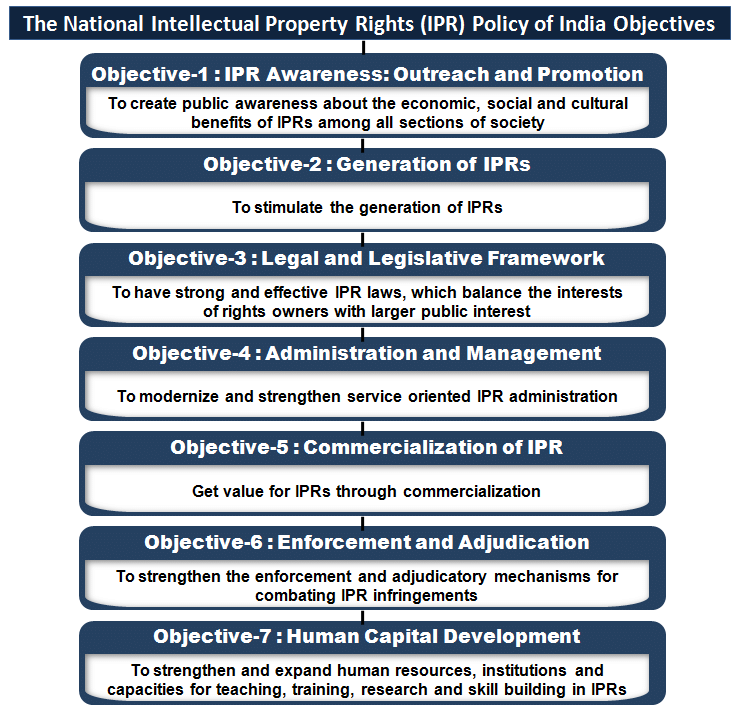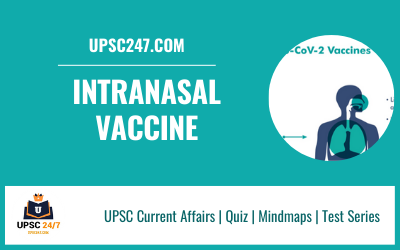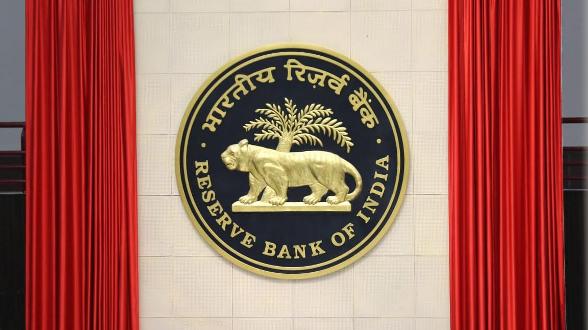Intellectual Property Rights (IPR) | UPSC
What is Intellectual Property Rights ?
- Intellectual property (IP) refers to creations of the mind, such as inventions; literary and artistic works; designs; and symbols, names and images used in commerce.
- Holders of intellectual property rights have a monopoly on the usage of property or items for a specified time period.
- The term intellectual property began to be used in the 19th Century.
- Only in the 20th century did it become part of the world’s legal systems.
Types of Intellectual Property :
What is copyright?
|
- Copyright (or author’s right) is a legal term used to describe the rights that creators have over their literary and artistic works.
- Works covered by copyright range from books, music, paintings, sculpture, and films, to computer programs, databases, advertisements, maps, and technical drawings.
Copyright Law :
- Copyrights in India are governed by “The Copyright Act, 1957”.
|
What is a patent?
|
- A patent is an exclusive right granted for an invention, which is a product or a process that provides, in general, a new way of doing something, or offers a new technical solution to a problem.
- To get a patent, technical information about the invention must be disclosed to the public in a patent application.
Criteria for issuing Patents in India :
- Novelty: it should be new (not published earlier + no prior Public Knowledge/ Public Use in India)
- Non-obviousness: It must involve an inventive step (technical advanced in comparison to existing knowledge + non‐obvious to a person skilled in the relevant field of technology)
- Industrial use: It should be capable of Industrial application
Patents in India & Law :
- Patents in India are governed by “The patent Act 1970”
- It was amended in 2005 to make it compliant with TRIPS.
What cannot be patented?
- Frivolous Invention: Invention that harms public order/Morality/ health of animals, plants & humans
- Methods of agriculture or horticulture
- Traditional Knowledge
- Computer Program
- Inventions related to Atomic Energy
- Plants & Animals
- Mere discovery of scientific principle
|
What is a trademark?
|
- A trademark is a sign capable of distinguishing the goods or services of one enterprise from those of other enterprises.
- Trademarks are protected by intellectual property rights.
Trademark And India Law :
- Trademarks in India are governed by Trade Marks Act 1999 which was amended in 2010.
|
What is an industrial design?
|
- In a legal sense, an industrial design constitutes the ornamental aspect of an article.
- An industrial design may consist of three dimensional features, such as the shape of an article, or two dimensional features, such as patterns, lines or color.
Industrial Design In india & Law :
- Industrial Designs in India are governed by “The Designs Act 2000”.
|
What is a geographical indication?
|
- A geographical indication (GI) is a sign used on products that have a specific geographical origin and possess qualities or a reputation that are due to that origin.
- In order to function as a GI, a sign must identify a product as originating in a given place.
- In addition, the qualities, characteristics or reputation of the product should be essentially due to the place of origin.
- Since the qualities depend on the geographical place of production, there is a clear link between the product and its original place of production.
- It also provides comfort to customers about the authenticity of that product.
- Once the GI protection is granted, no other producer can misuse the name to market similar products.
What is the difference between a Geographical Indication (GI) & a Trademark?
- A trademark is a sign/word/phrase used by an entity to distinguish its goods & services from those of others.
- A geographical indication tells consumers that a product is produced in a certain place & has certain characteristics that are due to that place of production.
- A trademark gives the entity the right to prevent others from using the trademark.
- On the other hand, GI may be used by all producers who make their products in the place designated by a geographical indication.
|
What is a Trade Secret?
|
- Trade secrets are intellectual property (IP) rights on confidential information which may be sold or licensed.
In general, to qualify as a trade secret, the information must be:
- Commercially valuable because it is secret,
- Be known only to a limited group of persons, and
- Be subject to reasonable steps taken by the rightful holder of the information to keep it secret, including the use of confidentiality
- Agreements for business partners and employees.
The unauthorized acquisition, use or disclosure of such secret information in a manner contrary to honest commercial practices by others is regarded as an unfair practice and a violation of the trade secret protection. |
What is Plant Variety Protection ?
|
- It refers to the protection granted for plant varieties.
- These rights are given to the farmers & breeders to encourage the development of new varieties of plants.
- Plant variety protection in India is governed by “The Protection of Plant Varieties & Farmers’ Rights (PPV&FR) Act, 2001”.
|
National IPR Policy, 2016
- The Policy aims to push IPRs as a marketable financial asset, promote innovation & entrepreneurship while protecting public interest.
- The plan will be reviewed every five years in consultation with stakeholders.
- To have strong & effective IPR laws, steps would be taken — including review of existing IP laws — to update & improve them or to remove anomalies & inconsistencies.
- The policy is entirely compliant with the WTO’s agreement on TRIPS.
- Department of industrial policy & promotion (DIPP) is the nodal agency for all IPR issues.
- The policy retains the provisions on Compulsory Licensing (CL) as well as preventing ever-greening of drug patents (Section 3(d) of India’s Patents Act).
- Under Indian Patents Act, a CL can be issued for a drug if the medicine is deemed unaffordable, among other conditions, & the government grants permission to qualified generic drug makers to manufacture it.

Aims of IPR Policy in India:
- The National IPR Policy aims to create and exploit synergies between all forms of intellectual property (IP), concerned statutes and agencies.
- It aims to incorporate and adapt global best practices to the Indian scenario.
- It aim to develop strong and effective IPR laws, which balance the interests of rights owners with larger public interest.
- It also focus on modernising and strengthening service-oriented IPR administration.
- It aim to strengthen the enforcement and adjudicatory mechanisms for combating IPR infringements.
- It strive to strengthen and expand human resources, institutions and capacities for teaching, training, research and skill building in IPRs.
- The Policy aims to push IPRs as a marketable financial asset, promote innovation and entrepreneurship, while protecting public interest.
- Special thrust is on awareness generation and effective enforcement of IPRs, besides encouragement of IP commercialisation through various incentives.
Read Also : Palm Oil And Biodiversity | UPSC
Intellectual Property Rights Issues: The Five Major Challenges Faced
There are many IPR issues that one faces while getting IP rights in India. The issues are as follows:
Patent Evergreening Prevention
|
- One of the most important intellectual property rights issues challenges is the prevention of the evergreening of the patents for multinational companies.
- Evergreening is strategy for extending the term of granted patent which is about to expire without increasing therapeutic efficacy in order to retain royalties.
- As we know, the companies cannot evergreen their patents simply by making minor changes.
- So, section 3(d) in the Indian Patent Act (IPA) possess as one of the biggest issues with regards to IPR.
- This act bars the grant of patents to new forms of substances.
- This has discouraged investments from western countries.
|
Subsidies & IPR Issues
|
- A major form of subsidies includes food subsidy, fertilizer subsidy, education subsidy, etc.
- For the complete implementation of TRIPS agreements, one needs to reduce or eliminate these subsidies.
- Thus, GOI needs to create a balance between providing subsidies & providing IP rights in India.
|
The Product Patents Process
|
- A product patent protects a product.
- It offers high protection to the original inventor to reduce the competition for the same product.
- Whereas a process patent protects the process through which one manufactures the product & not the product.
- It reduces the element of monopoly in the market.
- As India is a part of the TRIPS agreement, the agreement requires all its members to shift their patent regime from process to product patent.
- This remains a challenge for India, as process patent would be more helpful to a country like India.
- This is since India is a developing country & ordinary people are struggling with basic necessities like food.
|
Protecting traditional knowledge
|
- Traditional knowledge, especially in the field of medicine, is like a gold mine.
- GOI is bound to protect traditional knowledge by not allowing MNC’s to get patents on traditional culture.
- Above all, the government has created a Traditional Knowledge Digital Library (TKDL) to prevent the patenting of traditional knowledge.
- So, this is one of the intellectual property rights issues in India.
|
Compulsory Licensing & Drug Price Control Order
|
- One of the most important intellectual property rights issues that the government needs to address is the use of compulsory licensing.
- Compulsory licenses are authorizations given to a third-party by the Government to make, use or sell a particular patented product without the need of the permission of the patent owner.
- The provisions regarding compulsory licenses are given in the Indian Patents Act, 1970 & in the TRIPS (Trade-Related Aspects of Intellectual Property Rights) Agreement.
- It is a relaxation available to the developing countries under the TRIPS agreement, something which organizations misuse sometimes.
- Moreover, under section 84 of the IPA, a company can acquire a compulsory license for “private commercial use” under certain circumstances.
- With the Drug Price Control Order, the company needs to justify the price of the drug with regards to investments.
- If someone plays foul, then the government has the right to intervene.
- Multinationals are asking the government to revoke this provision.
|
International Treaties & Organizations Related To Intellectual Property Rights :
There are different subject matters of intellectual property like Patents, Copyright, Trademarks, Industrial design, Plant Varieties, etc. The need for protection in these different subjects arose in different periods. These are reflected in different treaties.
Paris Convention
|
- Paris Convention for the Protection of Industrial Property (1883)
- Since it deals only with Industrial property, it covered only Patents and Trademarks.
- It was among the first treaties to recognize various principles of international trade like National Treatment, Right of Priority, Common rules, etc.
|
Berne Convention
|
- Berne Convention for the Protection of Literary & Artistic Works (1886).
- It provided for copyright system. It doesn’t provide for any formality to claim protection.
- Protection is automatically accorded to any creation, provided work is original and other conditions under the treaty are fulfilled.
- It means that your work, if original, is already protected.
- You can claim that you have copyright.
|
World Intellectual Property Organization (WIPO)
|
- WIPO is one of the 17 specialized agencies of the United Nations (UN).
- WIPO was created to promote and protect intellectual property (IP) across the world by cooperating with countries as well as international organizations.
- It began operations in 1970.
- Headquarters: Geneva, Switzerland.
- WIPO currently has 193 member states.
WIPO’s activities include :
- Hosting forums to discuss and shape international IP rules and policies,
- Providing global services that register and protect IP in different countries,
- Resolving transboundary IP disputes,
- Helping connect IP systems through uniform standards and infrastructure, and
- Serving as a general reference database on all IP matters.
India joined WIPO in 1975. |
Trade-Related Aspects of the Intellectual Property Rights (TRIPS)
|
- TRIPS is an international agreement on intellectual property rights.
- It is a landmark and most comprehensive treaty on Intellectual property.
- TRIPS was the result of discussions held in the Uruguay round which led to the formation of WTO.
- This treaty is an offshoot of the General Agreement on Trade in Goods (GATT).
- This treaty provided a robust Dispute Resolution Mechanism and stringent penal provisions under the auspices of WTO.
- It came into force in 1995 & is binding on all members of the World Trade Organization (WTO).
TRIPS deal with 8 kinds of property rights :
-
- Patents,
- Trademarks,
- trade dress,
- Copyrights,
- Industrial Designs,
- Plant Varieties,
- Integrated Circuits and layouts, and
- Geographical Indication.
|










